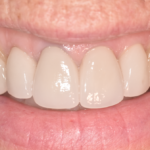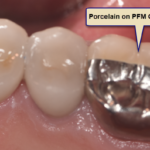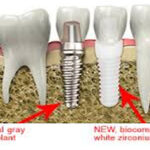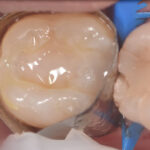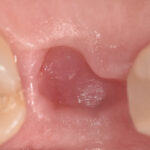Here are some of the frequently asked questions (FAQ’s) that may be in the minds of dental patients, even if they don’t ask the questions out loud:
FAQ 1: Are tooth-colored fillings better than silver amalgam (mercury) fillings?
Generally, yes. Aside from the unappealing appearance of silver fillings, they can cause teeth to fracture over time. As a general rule, if the filling is small it is better to use tooth-colored material called a composite. As fillings get bigger, inlays and onlays are needed. These types of restorations support your teeth through bonding. They also hold up to chewing pressure, don’t leak, and look like your real teeth.
________________________________________
FAQ 2: Why are my gums inflamed and bleed when I brush and floss?
Inflammation is caused by our body’s response to bacteria found in the crevice between our gums and teeth and is observable as bleeding by the patient. If this inflammation is not treated and controlled, it can lead to deterioration and breakdown of the supporting tissues of your teeth. This can lead to tooth mobility and tooth loss, so early detection and correction is important. Balancing the PH, bacterial levels and nutrition to your gums and bone can literally save your teeth. We have natural, non-surgical treatments that will restore the balance of your mouth and the health of your gums.
________________________________________
FAQ 3: I saw something on youtube about a problem with water lines in Dental Offices, is this true?
In our office we address this issue by not using tap water. We have individual distilled water containers for each patient. This eliminates the bio-film that builds up in ordinary water lines.
________________________________________
FAQ 4: How do you sterilize your instruments?
Our sterilization methods meet or exceed the standards set by the Center for Disease Control. All instruments are washed, scrubbed, placed in an ultrasonic disinfectant solution, then placed in the sterilizer at high temperatures. Additionally, this sterilization method does not use chemicals.

Carey O’Rielly DDS has been a practicing dentist for 35 years. He went to USC Dental School and Duke University for his undergraduate degree. He grew up in Laguna Beach and now lives in La Costa with his wife Victoria, who runs his office.
He began his career by owning and operating a network of six offices in the San Francisco Bay Area. Presently he owns a private holistic practice in North County San Diego’s Encinitas.
Dr. O started looking for solutions to his health challenges that resulted from the stress and environmental toxicity that built up over a ten year period running his dental network. He has dedicated himself to learning about oral systemic problems and how dentistry can affect your health. He has applied what he has learned over the last twenty years to ensure he, his staff and his patients are protected from the chemicals and toxic materials found in most dental offices. He has produced an environmentally friendly office that is also peaceful and calm.
He is an expert on dental materials having looked at hundreds of biocompatibility lab tests over the years. He has identified the most bio-friendly materials to use in his practice and which dental materials can be used to replace metal fillings and crowns, including BPA free and fluoride free ‘white’ fillings. He also uses metal-free Zirconia or ceramic implants and PRF (platelet-rich fibrin) grafting materials which come from the patient’s own blood.
Dr. O’Rielly teaches C.E. courses on the systemic effects of gum disease. He is an expert in using phase contrast microscopy for analyzing dental infections, where he shows patients what kind of microbes, i.e. bacteria, amoeba, and yeasts like candida are populating the mouth and affecting the body as a whole.
He has an educational blog and is writing a book on dental health called ‘Hidden Dental Infections: Healing Root Canals and Infected Teeth with the Erbium Laser’ where he discusses dental nutrition, toxic dental materials and the effects of old root canals on inflammation and overall health.

